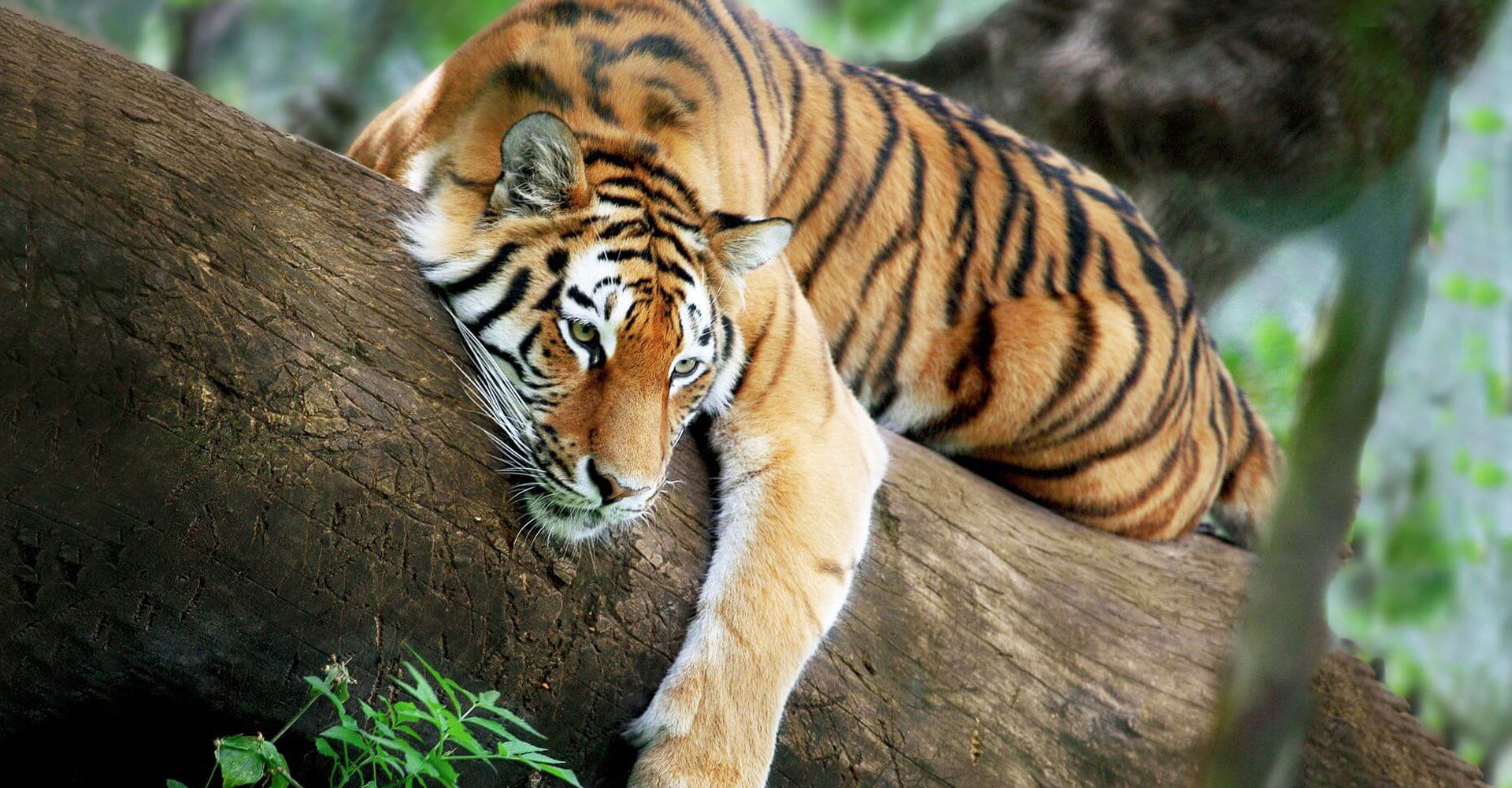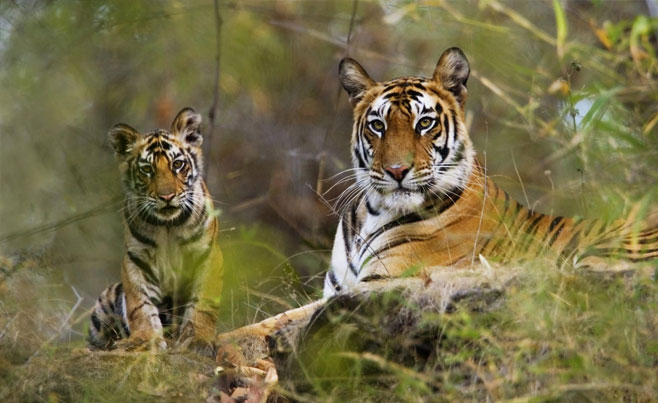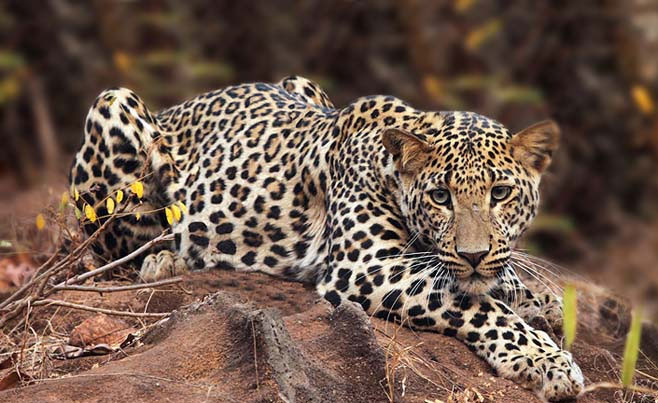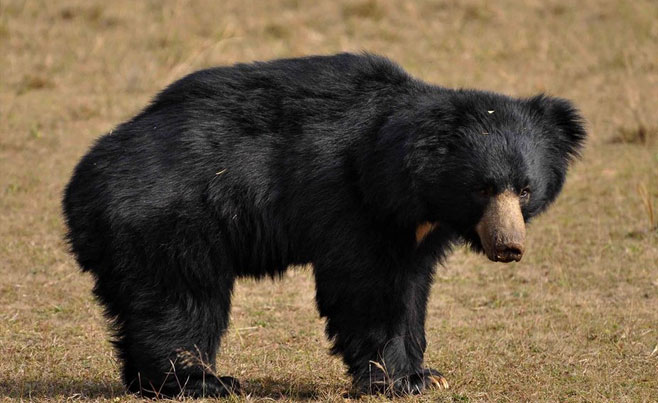Bandhavgarh National Park
Best Time To Visit
Jan
Feb
Mar
Apr
May
Jun
Jul
Aug
Sep
Oct
Nov
Dec
Most Popular
High Sighting
Park Closed
Low Sighting
About Bandhavgarh National Park
Species
Tiger, Leopard, Sloth Bear.
Overview
Bandhavgarh is one of India's most picturesque Central Indian jungles. Bamboo clumps are an intrinsic feature of Bandhavgarh, as is the hilly terrain with its steep ridges, sal forests and grassy pastures. The impressive Bandhavgarh Fort stands out as an extant reminder of the ancient history of the region. Even today discoveries are being made amidst the crumbling ruins and ramparts of the fort that throw new light on battles fought and empires lost. No one who visits this incredible forest comes away unaffected by its heady brew of history and wild nature.
History & Culture
No one is really sure who built the Bandhavgarh Fort, which was constructed on a virtually unassailable plateau at an elevation of 800 m., though scores of myths about its origins continue to do the rounds. It is clear, however, that the area now encompassed by the park has seen settlements and civilisations come and go for millennia. Historians suggest that sandstone caves to the north of the Bandhavgarh Fort harbour Brahmi inscriptions dating back to the 1st Century B.C. One of these caves, called Bagdhalak, is embellished with the stripe patterns and pugmarks of the tiger (locals still venerate the cat and colourful tiger images can be seen at scores of tiger temples, perhaps their way of appeasing the awe-inspiring animal). Inscriptions attributed to King Bhimsen dating back to 300 AD have also been recorded from the fort walls.
The Chandela dynasty of Bundelkhand, most famous today for having built the Khajuraho temples (210 km. away) also ruled here for a while around the 12th century. Later, warrior clans fought and lost many battles for possession of the fort, until the Baghels made the Bandhavgarh Fort their capital in the 17th century. The house of Rewa, whose descendents still own the imposing fort, trace a direct lineage from the Baghel dynasty and the fort is still owned by the Rewa family. This is, in fact, the only private property legally recognised within the National Park area and tourists can visit it after obtaining permission. Today the fort is, however, run down and has been ever since the capital was shifted to Rewa 120 km. away. Till a few decades ago it served as a hunting preserve for blue bloods, who took advantage of the fact that the forest had reclaimed much of its once well-manicured estate.
After Independence the privy purses were abolished and the territories of royals were taken over. Bandhavgarh became a part of Madhya Pradesh and was converted into a National Park in 1968. Hunting was officially stopped, new water holes constructed and grazing curbed. Tigers, pushed to the brink of extinction, found a new lease on life. The relatively small 105 sq. km. of protected area was extended to 449 sq. km. as late as 1986. Tigers benefited and their numbers rose because young ones from new litters were able to carve prey-stocked territories for themselves.
The source of the Charanganga, a vital water source for the park, originates within the fort precincts. Here almost touching the ramparts, an imposing stone statue of a reclining Vishnu was carved around the 10th century. Called Sesh Saya, this water source was never disturbed or destroyed despite hundreds of years of wars and skirmishes, because people believed the Charanganga originated at the feet of Vishnu. This worship of forested water sources was once common across India. Such protection had widespread social support and was clearly more effective than the mere legal protection most reserves now enjoy.
It is believed that Lord Ram stopped here after vanquishing Ravana in Lanka and that it was Hanuman's monkey architects, who built the bridge to Lanka, that designed and constructed the Bandhavgarh Fort. Lakshman, Ram's obedient and dutiful brother, was gifted the fort, thus the name (Bandhav - brother; garh - fort). People of the area still worship Lakshman at a temple within the fort.
The white tigers of Rewa were taken from the wild and are justifiably famous worldwide. But no specimens have been seen in the wild in recent years. A well documented story reveals that Mohan, the first ever white tiger cub to be discovered, was accidentally found in the Bandhavgarh forest in 1951 and was kept as a pet by the then Maharaja. Vets confirmed that it was not an albino, but a rare recessive gene that had somehow surfaced. This one animal was the progenitor of all the cubs that now live in zoos in different parts of the globe and displayed to the public as a (very beautiful) freak of nature. Bandhavgarh aficionados, firmly believe that somewhere, somehow, yet another wild white tiger will emerge from the wilds of this forest.
Trails and Excursions
The Rajbhera grasslands are a favourite spot for tigers. Keep a lookout for jackals that sometimes point the way to a kill lying hidden in the tall grass. Dholes pursuing sambar have also been spotted here. Chorbehra nullah is a route mahouts take with tracker elephants and even late afternoons can yield much fauna besides the tiger.
The Kilkutta hillock, a favourite resting spot for tigers, can be reached through thick forests.
Kabir Chaura on the way to the fort almost invariably has old and new pugmarks. Birdwatchers are advised to travel slowly and to stop frequently along this route. Vultures, Blue Rock Thrushes and Crag Martins have made the ramparts their permanent home.
The grassland near Jamania nullah is a reliable place to search for jackal, tiger and chital.
Within the Fort walls, a small number of blackbuck roam free, but they do not venture into the park below.
How To Reach
By Air:
The nearest airports are Jabalpur (130 km.) and Khajuraho (210 km.) from where jeeps can be hired to drive to the National Park.
By Road:
From Jabalpur, Khajuraho or Satna, 112 km. away and which has a direct bus to Tala every morning at 8 a.m. at a fare of Rs. 60/-
Tips:
A good road links Bandhavgarh to Khajuraho. If you choose to fly to Khajuraho from New Delhi you could pack in a visit to the world famous temples, explore the nearby Panna Tiger Reserve (25 km. away) and its magnificent Ken River for a few hours (probably one of Madhya Pradesh's most picturesque parks) and be on your way to Bandhavgarh within 24 hours.
There is no bank at Tala to change money. This is best done in the city itself.
Tala village is the point at which visitors are allowed entry into the park. A visitor centre at the gate offers information on park rules.
For elephant rides, prior arrangement must be made with the Forest Department at their Umaria Road office.




